SOLVED
Unlocking the Mysteries of the Inhabitants,
Languages and Religions of the World
Common Cultures
If we travel along the Mesopotamian valley, 235 kilometers southeast from the tower of Babel, we will arrive at the city of Ur. This was the hometown of Abraham, the father of the Israelite nation. He was born 353 years and nine generations after the Genesis Flood.
Through the course of time, Abraham's family migrated to the city of Ur, however, so did Nimrod's religion. To this day, in that location, there still stands an ancient “tower” that was dedicated to the moon god Sin (also called Nanna). It is made of a thick skin of burnt-bricks mortared together with bitumen, just like the tower of Babel.
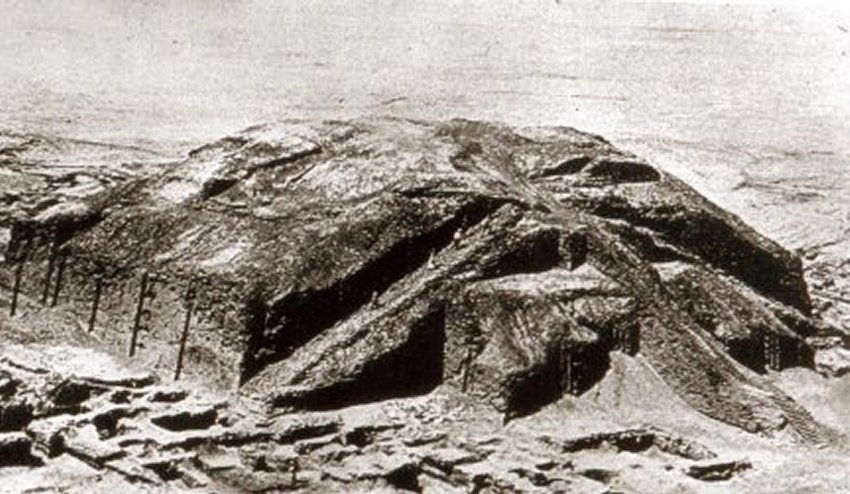
Many years later, God reminded the children of Israel saying, “Your fathers dwelt on the other side of the flood in old time, even Terah, the father of Abraham, and the father of Nachor: and they served other gods. And I took your father Abraham from the other side of the flood, and led him throughout all the land of Canaan, and multiplied his seed, and gave him Isaac. And I gave unto Isaac Jacob…” (Joshua 24:2-4).
It appears that living amidst this Babylonish culture, even the generations of Shem became infected with the Babylonian wine, and to turn from the Living God to serve “other gods”. These “gods” were the inventions of Babel that polluted the whole region of Mesopotamia. It seemed necessary then to call Abraham out of that environment. The Lord told Abraham, “Get thee out of thy country, and from thy kindred, and from thy father's house, unto a land that I will shew thee” (Genesis 12:1).
So Abraham moved to the land of Canaan where Isaac and Jacob were born. However, many years later, a great famine ravaged the land of Canaan, so Jacob found it necessary to move to Egypt with his family, and take up residence there. They were at first kindly received but as they began to multiply in numbers they were perceived to be a threat by Pharaoh and were made slaves of Egypt for a period of 400 years.
Before we go on, it is here that we must stop and ask the question, who were the Egyptians? We already know that these would have been the dispersed from Babel, and if we follow the chronology of the Bible, we will find out that it was the descendants of Noah's son, Ham, who migrated to this location. The Bible therefore, refers to Egypt as “the land of Ham” (Psalms 105:23).
Furthermore, if we zoom in on Ham's family tree, we see that Ham also had a son named “Mizraim” (Genesis 10:6, Hebrew: Mitsrayim), whose name is also translated “Egypt”. He would have geographically represented a center that he and his family colonized after leaving Babel in that early period of Post-Flood history.
To this day there are still dozens of great pyramidal structures or “towers” along the Nile Valley that have survived the ages testifying to their Babylonish ancestry. The oldest of these is the stepped pyramid in Saqqarah and the most famous are the pyramids of Giza.
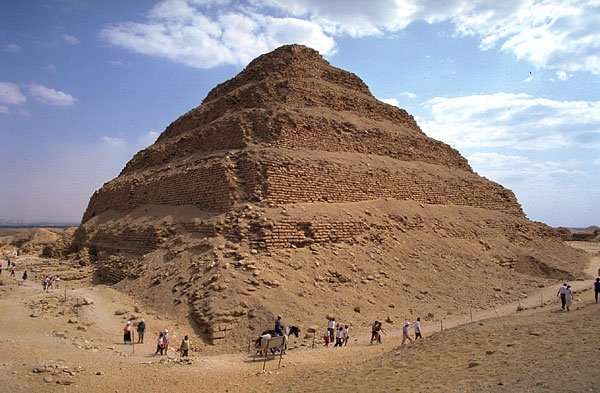
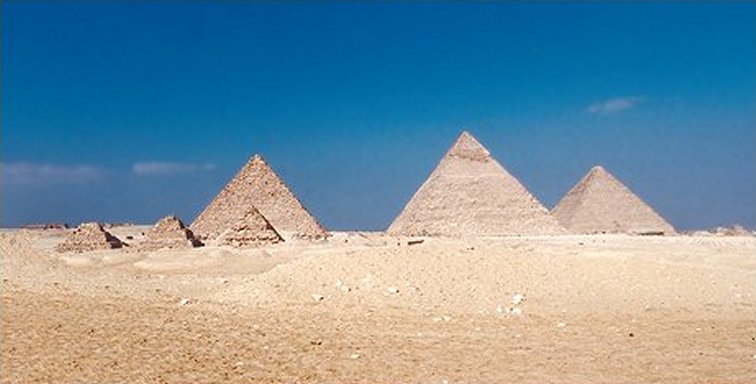
Israel spent 400 years in Egypt and would have been very familiar with the religion of the land. In fact, when Moses was raised up by God to lead Israel out of Egypt, they brought with them the religion they learned there. “And they made a calf in those days, and offered sacrifice unto the idol, and rejoiced in the works of their own hands. Then God turned, and gave them up to worship the host of heaven … and the star of your god Remphan, figures which ye made to worship them” (Acts 7:41-43).
Here we are specifically told that the children of Israel began to worship the idol of a golden calf. But where would they get such an idea? There is no doubt they would have learned this idolatry in the land of Egypt. To this day, there still stands the remains of the second largest temple ever built by the Egyptians and it was dedicated to the bull god Apis.
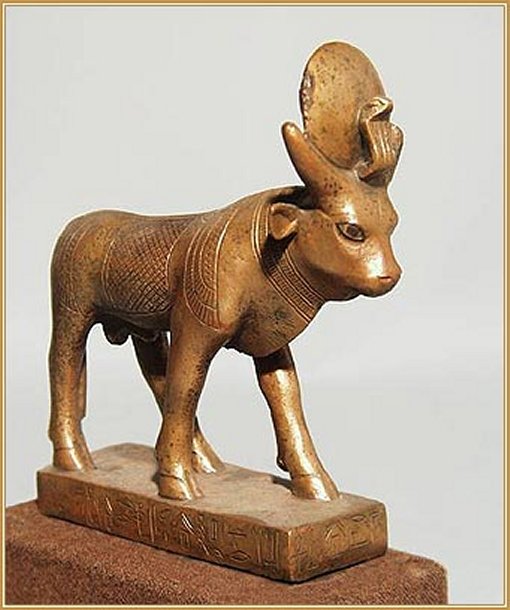
What is of further interest, Stephen associates the worship of this idol with the worship of the host of heaven. Therefore, we find it no coincidence that Taurus, one of the twelve constellations of the zodiac, is portrayed as a bull. This bull was originally formed in a connect-the-dot fashion, and finally, they made an idol to worship it. This form of idolatry as we have seen originates back in the land of Babylonia. “From the time of the Chaldeans, some 5,000 years ago, this constellation has been seen as a bull” (A Guide To Skywatching, by David H. Levy, p. 214, 1994).
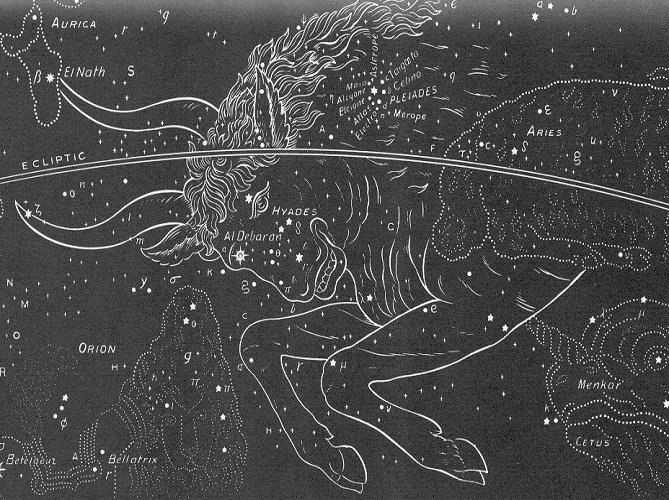
From those early years after the Flood (and possibly carried over from pre-Flood times) men began to notice the various star groups and saw in these constellations fanciful resemblances to all sorts of creatures. The stars only formed the skeletons of these creatures and the imagination took care of the rest, weaving myths and legends of these images in the sky.
The ancients noticed that the sun moved in a regular path through the heavens (although it was the earth revolving around the sun) and would visit one constellation each month as it moved across the sky. Each month had its chief constellation, referred to as the “signs of the zodiac”, and adjacent to these there were numerous sidereal pieces. In 1922 the International Astronomical Union officially defined a total of eighty-eight constellations.
The rainy seasons came as the sun visited one constellation, the harvest came as the sun visited another, and the “gods”, so it seemed, became responsible for their fruitful blessings. However, a storm could also ravage their crops, or a drought could dry up the land, so they believed they were always at the mercy of the “host of heaven” who could bless them with good or inflict them with evil. To gain the favor of the gods, appeasing them with offerings and sacrifice seemed the natural thing to do.
This was the path of superstition that mankind chose shortly after the Flood, and was the direct result of their failure to glorify God for all of His blessings. When they became unthankful, they eventually forgot that it was their Creator who controlled all the forces of nature, and that it was Him who made “his sun to rise on the evil and on the good, and sendeth rain on the just and on the unjust” (Matthew 5:45).
The giving of thanks was the appropriate response, knowing that it was the Lord who sent “the rain of your land in his due season, the first rain and the latter rain, that thou mayest gather in thy corn, and thy wine, and thine oil” (Deuteronomy 11:14). However, the Gentiles, in the vanity of their minds, created new gods, and the One and only true God and their Creator became forgotten and hidden behind the veil of a thousand new gods.
| Copyright © 2018 AccordingtotheScriptures.org. All rights reserved. | Home | Our Purpose | Statement of Faith | Contact | Subscribe |
